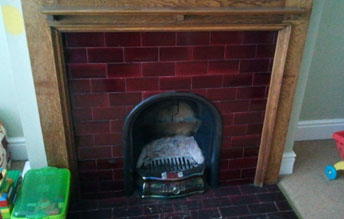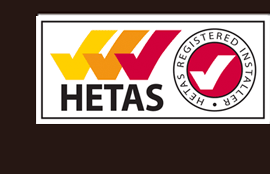FAQs
Why do I need my chimney swept?
How do I know if my chimney needs sweeping?
How often do I need my chimney swept?
Sweep regularly?
Does it matter what I use for fuel?
Why does my chimney smoke?
How can I stop birds nesting in the chimney??
I have a gas fire. Do I still need the chimney swept?
Why do I have bits falling down the chimney?
Can the chimney be cleaned properly with just a vacuum?
What is carbon monoxide?
What can you do to safeguard yourself from Carbon Monoxide?
What does the safety check cover?
Why do I need my chimney swept?
There are three basic reasons why you should get your chimney swept:
- To protect your health - Breathing fumes from gas or solid fuel fires can cause serious damage to your health and in the worst cases prove fatal. Having your chimney swept regularly will make sure that the flue is sufficiently clear to allow the fumes to escape freely and safely out of the chimney.
- To avoid a chimney fire - Having your chimney swept regularly will drastically reduce the chances of having a chimney fire. Chimney fires can cause property damage - the least usually being a cracked or broken chimney pot, which will need to be replaced and the worst being you could lose your home! Fortunately, the more extreme outcome does not happen very often, but it does happen.
- To avoid smoke damage - Each time the fire is used, soot will accumulate up the chimney. Gradually, this will decrease the size of the flue which, in turn, will lower the draw of the smoke upwards. If the chimney does not have enough pull, the smoke will enter into your room, not only causing irritation to you, but can also blacken your fireplace or the decorating above.
Back
How do I know if my chimney needs sweeping?
You should get your chimney swept if you have:
- Specks of soot dropping into the fireplace
- Tar deposits visible in the chimney or stove
- A strong odour coming from the fireplace.
- Draughting or smoking problems with the chimney.
- Just moved home and want to use the chimney.
- Animals nesting (squirrels or birds) as this can cause fire hazards.
Back
How often do I need my chimney swept?
This depends on how often you use your fire and what you burn. A general guideline is:
- For occasional evening and weekend use, once a year is enough.
- For more frequent use, especially if you burn a lot of wood, you should have your chimney swept once before you start having fires, usually in the autumn and then once again half way through the burning season, about January.
Back
Sweep regularly?
This will always depend on how often you use your chimney.
Wood - Up to four times a year (once a season when in use)
Bituminous Coal - Twice a year
Smokeless Coal - Once a year
Oil - Once a year
Gas - Once a year
Back
Does it matter what I use for fuel?
If you live in a smokeless zone then you will be restricted to burning smokeless fuels. To check if you live in such an area, you can phone your local authority and ask them. If, like most people, you do not live in a smokeless zone then it is up to you what you burn. House coal produces very good heat. Wood also is very good. It is a matter of preference.
With wood though, there comes a caution. Wood must be well seasoned before it is used in a fire. This means that all the sap and moisture should be removed from it. This is accomplished by covering the logs, leaving some ventilation for air, for at least a year from when the tree was cut down. If you use logs that are not seasoned, they will not burn well on the fire. This means they will give very little heat out but, more importantly, they will cause a build up of creosote. Most of the creosote cannot be removed by sweeping because it bakes onto the chimney walls. As the layer of creosote increases, so does your chance of a chimney fire.
Back
Why does my chimney smoke?
There are different reasons why your chimney may smoke. Below is a list of the major causes. It may be that only one, or a combination of any of them could cause the smoke to blow back into your room.
-
Blocked chimney
Solution - Having the chimney swept will either correct the problem or highlight where and what the blockage could be. The chimney sweep can then advise on what work will then be necessary. -
Cold air up the chimney
Solution - If a fire hasn't been lit for a while, the air up the chimney can get cold. Cold air is heavy and if the flue isn't heated quickly enough, the cold air will force the smoke back into the room. Initially, just burn newspaper as this will create a lot of heat quickly and will move the air upwards. -
The wrong type of cowl fitted on top of the pot
Solution - Many people are ill-advised as to the correct type of cowl to fit. Fitting the wrong type can either cause the problem or make it worse. Consult your chimney sweep as to whether you have the right cowl fitted. -
Inadequate ventilation
Solution - All fires need air to make them burn properly. A lot of properties are very well insulated with double glazing etc. thus not allowing a flow of replacement air into the room. This can be solved by fitting air vents or simply leaving the door to the room open. -
Downdraught
Solution - Downdraught is a brief flow of air down the chimney resulting in puffs of smoke being pushed back into the room. One reason for downdraught is that the chimney stack has been built too short and another could be trees, buildings or other large high objects interfering with the wind flow. To help with this problem, a cowl can be fitted on to the pot. It is advisable to ask your chimney sweep which type of cowl to use as there are many different designs suited for different problems. If the incorrect cowl is fitted, it may make the problem worse. -
The wrong sized fireplace
Solution- In the UK, the average sized fireplace opening is about 18" wide and 24" high. If it excedes this by a large amount, some of the smoke may curl out into the room. Try either lifting the grate up or lowering the height.
Back
How can I stop birds nesting in the chimney?
Birds nesting, especially Jackdaws, can be a problem. More so the nearer you get to the countryside. There are companies who make purpose built bird guards. These should always be used in preference to putting chicken wire on the pot. Proper bird guards are strong enough to withstand any efforts from the birds to pull them off. They do not reduce the size of your chimney pot in any way (which is important for the draw of your chimney) and they also allow for the sweep's brush to come completely out of it, ensuring a more thorough clean.
Back
I have a gas fire. Do I still need the chimney swept?
You should have your gas appliances checked and serviced regularly by a Corgi registered engineer. This should be done yearly or more often if a problem occurs (See important advise on Carbon Monoxide). At the time of the service, the engineer will check the draw of the chimney and, if there is a problem, sweeping the chimney will almost certainly be necessary.
Why do I have bits falling down the chimney?
Even after the chimney has been swept thoroughly, it is normal to have a small amount of bits falling. This could include soot, sand or bits of cement. This problem can increase with the age of the chimney because the sand-based render will loosen off over the years. Generally, this is not a problem but is just something that occurs with older chimneys. Another reason can be that the wind and the rain dislodge bits which can fall down into the grate or appliance. This can be lessened by fitting the correct type of cowl. (Ask your chimney sweep for advice).
Back
Can the chimney be cleaned properly with just a vacuum?
No, a vacuum is used to catch the soot and dust before it enters the room and also for cleaning off the ledge after sweeping the chimney. Using a good quality chimney sweeping brush or a combination of brushes is the only method, at the moment, which will clean the chimney properly.
Back
What is carbon monoxide?
Carbon Monoxide is colourless, odourless and has no taste. It is a killer! During an average year about 50 people die from Carbon Monoxide poisoning caused by fumes from faulty heating appliances. More than three times that number end up in hospital. Carbon Monoxide can be given off by any appliance which burns fossil fuel such as gas, coal or oil. It can enter your home if:
- Your appliance is faulty
- The room is not properly ventilated
- The chimney or flue is blocked
The danger signs are as follows:
- Gas flames that burn orange or yellow instead of blue
- Sooty stains on or above appliances
- Solid fuel appliances that burn slowly or go out
Back
What can you do to safeguard yourself from Carbon Monoxide?
- Have your appliances regularly serviced by a qualified engineer
- Ensure your home is properly ventilated-never block vents
- Make sure all chimneys and flues are regularly swept and kept clear
If you're buying a Carbon Mononxide detector, look out for one that is kite marked to BS 7860, but never rely entirely on these devices.
Carbon Monoxide sometimes makes people feel ill. If you develop any of the following: Drowsiness, Headaches, Chest pains, Sudden giddiness when standing up, Sickness, Diarrhoea and Stomach pains, switch off your appliances and see your doctor at once.
The above information was released by the Consumer Safety Unit of the Department of Trade and Industry 1996.
Back
What does the safety check cover?
- The basic condition of chimney and flue.
- The absence of any blockage in flue.
- The accessible areas of any appliance and connector.
- That the correct terminal is fitted (if any).
Safety advice is, of course, always free.
What we do

TL Chimneys offers a variety of chimney sweeping services to the general public, including residential and commercial customers, using the latest methods to achieve the best results and to ensure your chimney and flues are clean and safe.


